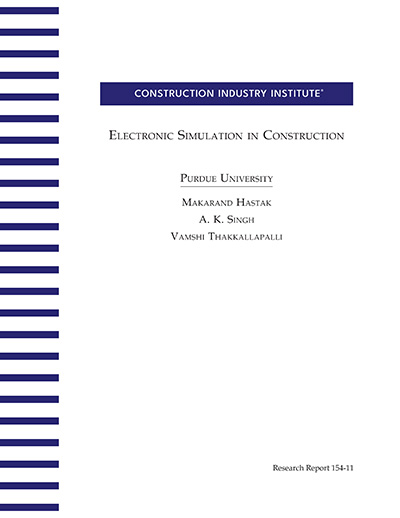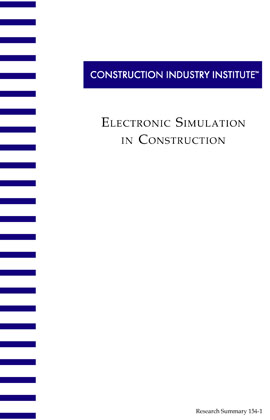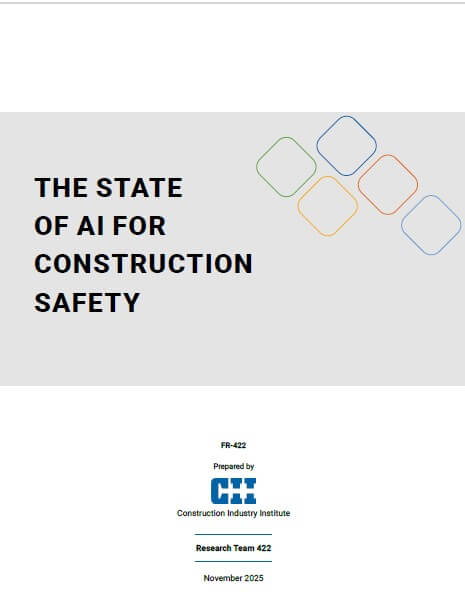
Electronic Simulation in Construction
The main purpose of this research is to identify, analyze, and evaluate the current use of interactive electronic simulation in construction. This research establishes the state of electronic simulation in construction to include: the state-of-the-art, state-of-practice, and the state-of-research-and-development for electronic simulation in construction.
For the purpose of this research, electronic simulation is defined to include (i) spatial visualization (3D-Static), (ii) virtual interactive environment (3D-Dynamic), (iii) construction process simulation (mathematical models), as well as (iv) an integrated simulation environment to include 3D-Static, 3D-Dynamic, mathematical simulation models, as well as other project management software.
The results of this research represent a “snapshot in time” of the state of technology. The technology is rapidly changing and developing with additional improvements made by suppliers driven by the increased demands of the marketplace for more intuitive and functional solutions and systems. The software simulation developments over the past two decades have been driven primarily by the industry direction to what process needed the improvement. Initially, simulation programs and tools where developed to handle process technologies, then a period of extensive efforts were deployed to deliver systems and software improvements in the engineering design work process, more recently industry applications focusing on materials management and improved procurement processes have become more widely used. It is now recognized that the integration of all of this information will benefit the construction industry significantly and technology suppliers are now beginning to address the specific requirements of an integrated engineering, procurement and construction project work environment.
This study revealed the following areas that could significantly benefit from the use of electronic simulation:
- Plant and facility layout,
- Equipment installation and access,
- Design interference checks,
- Construction interference checks,
- Maintenance and operations review,
- Construction equipment and temporary construction facilities layouts,
- Constructability reviews,
- Construction sequencing,
- Schedule progress monitoring,
- Materials management,
- Construction process animation,
- Construction process simulation,
- Marketing, and
- Training.
It was determined that the type of projects that would benefit most from the use of electronic simulation include:
- Projects that Use 3D Modeling,
- Large Projects,
- Fast Track Design Build,
- Heavy Process Oriented Projects,
- Process Piping,
- Rehabilitation Projects,
- Greenfield Projects,
- Power Plants,
- High Risk Projects,
- Grass Root and Revamp Projects, and
- Projects with Several Constraints (e.g., Time, Supplies, Windows, Completed Logic, Unlimited Resources and Confined Spaces)
With 92 percent of the survey respondents agreeing that electronic simulation technology adds value to the project management process, it will remain an important field of review, consideration and implementation facing our industry membership. However, it is essential for the industry to take a participative role in driving the recommendations and supplier developments of the electronic simulation tools to ensure the technology is designed for the industry end-users.
The results obtained from the research were used to develop a decision aid to assist users in selecting the most appropriate electronic simulation technology for their use.



